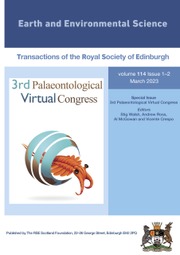Article contents
XXXII.—On the Urinary Secretion of Fishes, with some Remarks on this Secretion in other Classes of Animals
Published online by Cambridge University Press: 17 January 2013
Extract
Notwithstanding the progress made of late years in animal chemistry in connection with comparative anatomy, I am not aware of any observations that have yet been published on the urinary secretion of fishes. The neglect of this inquiry probably has arisen from several circumstances,—the nature of the element inhabited, the peculiarities of the urinary organs, the difficulty of collecting the matter voided, and its having no well-marked distinctive qualities obvious to the senses.
For some years, as leisure and opportunities offered, I have given attention to the subject, and in the paper which now I have the honour to submit to the Society, I beg to communicate the observations I have made. Few and imperfect as these are, they are given mainly with the hope of attracting notice to the inquiry and of inducing others more favourably situated to engage in its prosecution.
Information
- Type
- Research Article
- Information
- Earth and Environmental Science Transactions of The Royal Society of Edinburgh , Volume 21 , Issue 4 , 1857 , pp. 543 - 548
- Copyright
- Copyright © Royal Society of Edinburgh 1857
References
page 544 note * ProfessorOwen, . in his Lectures on the Comparative Anatomy of the Vertebrate Animals (Part i., p. 223)Google Scholar, describes the bladder of the pike as communicating with the kidneys by a single Common ureter; in most instances I have found the communication such, but in one fish, one of six pounds, it was by two.
page 546 note * Whether this receptacle be considered,—as it is by MrJones, T. R., in his General Outlines of the Animal Kingdom (p. 585)Google Scholar—the unobliterated remains of the allantois, or a true urinary bladder, its primary use, I apprehend, can hardly now be questioned, since all the later examinations that have been made of the fluid contained in it prove that in composition it is urinous, as stated above: whether, in the instance of the frog, it may not subserve to aid, as some distinguished physiologists suppose, by transpiration in keeping the skin duly moist, is open to question.
page 547 note * Trans. Ent. Society, vol. iii., N. S.
page 547 note † When I first examined the excrement of spiders and scorpions in 1847–1848, operating on minute quantities, I inferred that it consisted chiefly of xanthic oxide: Guanine was not then known. Since its discovery by Bodo Unger, I have re-examined portions of the excrement of each, which I brought from the West Indies, and have satisfied myself that the principal ingredient of both is this compound; I have also found it, in accordance with the researches of Will and Gorup-Besanez, to form the chief portion of the excrement of our spiders. The very low degree in which this excrement is soluble in cold muriatic acid may account for its having been first confounded with the xanthic oxide.
page 547 note ‡ Edin. Phil. Jour., vol. xlv. p. 383.
page 547 note § Lehmann's, Physiological Chemistry, vol. ii., p. 458.Google Scholar
page 548 note * I may mention as an instance the swallow, feeding like the trout, when the food of the latter is chiefly insects, and, as regards the secretion in question, showing a remarkable difference. From the nest of a pair I had an opportunity of observing, the young of which were only a few days old, the droppings on a flag-stone beneath, in one day, were as many as forty-five; those collected and dried thoroughly weighed 78·3 grains; the following day, the droppings were seventy. They consisted chiefly of lithate of ammonia with a little urea, and of the indigestible remains of insects,—the urinous portion by far the largest. The excrement, it may be inferred, was chiefly from the young birds, as the parent birds were almost constantly on the wing providing food. How large in quantity was this excrement in comparison with the bulk of the birds! I have found an old swallow to weigh only about 300 grains, and when thoroughly dried no more than 105 grains, so that the amount of excrement in two days exceeded considerably in weight one of the old birds!
- 4
- Cited by

